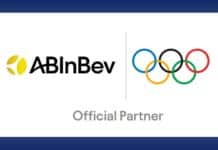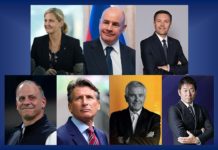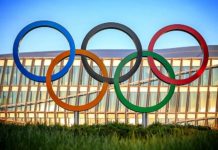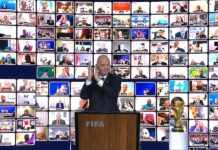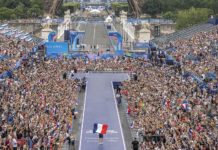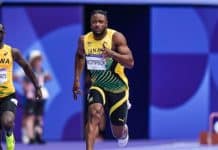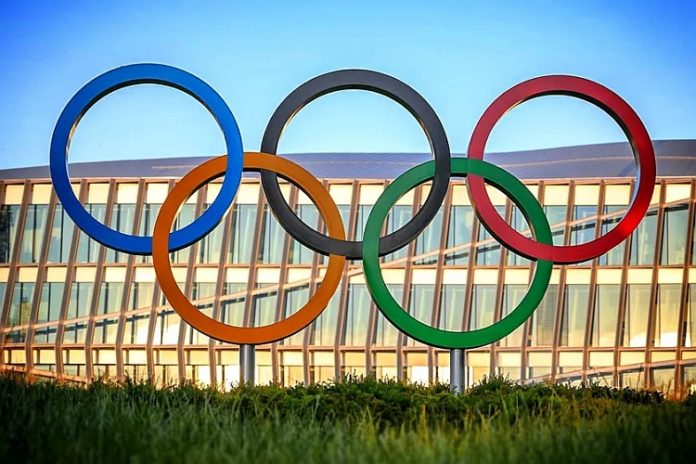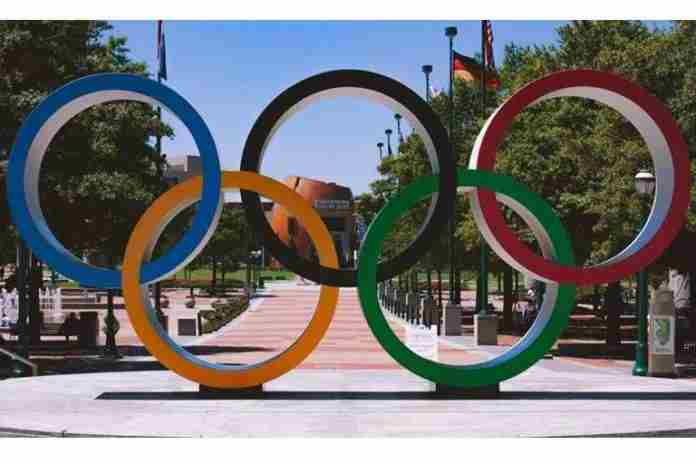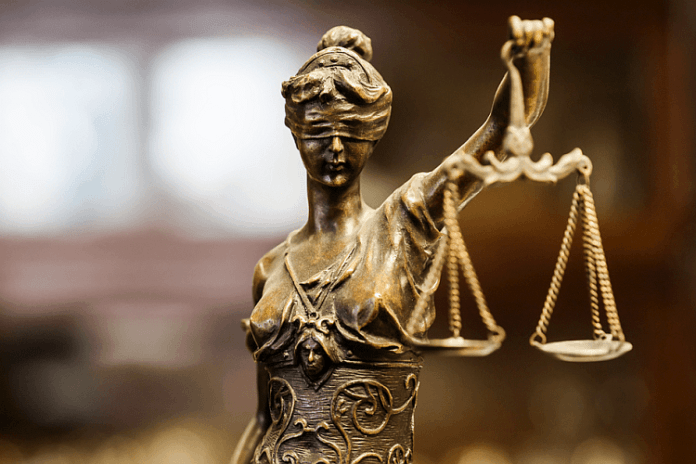★ The Sports Examiner: Chronicling the key competitive, economic and political forces shaping elite sport and the Olympic Movement.★
★ To get the daily Sports Examiner Recap by e-mail: sign up here! ★
≡ IOC PRESIDENTIAL ELECTION ≡
As noted in yesterday’s part one of an issue-by-issue look at the IOC Presidential candidates and their positions:
● The International Olympic Committee will choose its 10th President at the 144th IOC Session in Greece in March 2025, its first such election in 12 years. Seven members are running and their manifestos have been published.
● The candidate statements take on extra importance in view of the IOC’s regulations for the 30 January 2025 in-person presentations that state: “The presentation by the candidates must reflect the content of their respective Candidature Document published on the IOC website.”
● The Sports Examiner profiled the statements – one by one – of Prince Feisal Al Hussein (JOR) and Sebastian Coe (GBR) here; of Kirsty Coventry (ZIM), Johan Eliasch (GBR) and David Lappartient (FRA) here, and of Juan Antonio Samaranch (ESP) and Morinari Watanabe (JPN) here.
Let’s continue our look at some of the hot-button issues that ran through most, or all, of the manifestos. All of the statements emphasized good governance, sustainability, a more meaningful outreach to engage young people and to responsibly employ artificial intelligence.
Yesterday’s review covered increased roles for IOC members, the Olympics in the future, and selection of host cities. On to part two:
Revenue generation and sponsorship:
All of the candidates want more revenue and pledged to look at new ways to find it. Five had more specific comments:
● Al Hussein: Wants to “reimagine” the IOC’s TOP program, specifically to have benefits for partners between the Games.
● Coe: “We must create revenue streams that appeal to younger fans. Drawing on the expertise of our membership, I will develop new, more affordable partnership models while respecting the rights of our trusted partners and our unique values and traditions.”
● Coventry: “I will advocate for a new value proposition that strengthens relationships with existing partners and attracts new ones, whilst protecting the uniqueness of the Games and our core values. By working with the innovative potential of our digital engagement projects around [Olympic Broadcasting Services] and Olympic Channel, our top sponsors and media partners, we can implement strategies to expand the Olympic platform. This will deepen audience engagement and create more touchpoints with sponsors and partners, between the Games.”
● Eliasch: He suggested two pathways forward, starting with “We must be particularly careful not to fall into the trap of exclusive arrangements and partnerships which suppress creativity and growth. We should pursue an approach which encourages competition and dynamism.”
But he added: “We must safeguard our top sponsors’ interests, ensuring that there are no short-cuts to the level of exposure they benefit from … they wish to integrate their brand into stories and moments around the Games. We must work on unlocking the next level of value creation with sponsors, creating unique stories that not only resonate with viewers but which continue to improve their experience.”
● Samaranch: Clear directive to “Launch a comprehensive review of the TOP Programme” and also to change the equation going forward: “Create new levels of “Partnership” with more dynamic opportunities for companies to engage with the Olympic Movement and programmes. This should include exploring new avenues of promotional exposure at the Games while fully respecting our Clean Venue and Field of Play Guidelines.”
So, the no in-venue advertising rule would remain. But Samaranch – whose background is finance – sees new revenue opportunities with an Olympic Donor Program, using IOC assets such as Olympic Broadcasting Services and Olympic Channel Services for outside contracts, creation of a Sports Investment Fund, and monetizing the IOC’s massive data inventory.
Television and broadcasting:
This is a really interesting area as no one knows where technology and viewers are headed, and how fast? Four candidates shared specific comments.
● Al Hussein: Wants to “reimagine advertising models to ensure broadcasting rights value.” Is this an opening for on-field advertising, a la the FIFA World Cup, or something else?
● Coventry: “It is impossible to see where the media landscape will be in five years but it is clear that the trend of linear television remains a key pillar of engagement. However, the rapid growth of digital platforms, streaming services, and on-demand content calls for greater adaptability.”
● Eliasch: Sees a new model emerging quickly, and wants to be prepared. “Doing this will mean embracing new modes of storytelling and being open to new forms of monetisation. With digital technology, we have unparalleled opportunities to proliferate our values.”
He did give his view of the future, decidedly on the digital side: “we must continue investing in digital innovations; the expansion of direct-to-consumer platforms, with high-quality exclusive content and different tier-focused content models; and more premium fan engagement experiences” and “Ahead of LA 2028 we should be preparing the ground for a completely different viewer experience, with storytelling and highlights more prominent.”
So, perhaps the IOC will sell Olympic coverage directly to consumers past 2032, when the longest current broadcast contracts expire? A fascinating concept, especially if paired with the National Olympic Committees, but with far more risk than today’s broadcast agreements.
● Samaranch: Took a stand on behalf of athletes and their need for self-promotion through the Games: “Encourage our Media partners to be more flexible with athletes regarding their social media activities during Games-time, while respecting existing Olympic rules and obligations, for mutual benefit.”
Athlete support, payments and prize money:
World Athletics – headed by Coe – offered first-ever federation prize money payments at Paris 2024, with $50,000 for each gold medalist (individual or team). Current IOC President Thomas Bach (GER) strongly criticized this and Coe has apologized for not communicating the federation’s plan in advance to other IFs and Olympic stakeholders. But it further opened the door to questions of athlete pay at the Games and there was little agreement among the candidates. Not surprisingly, the two Olympic champion candidates – Coe and Coventry – were the most enthusiastic about athlete compensation.
● Al Hussein: Noted carefully, but without further elaboration that athlete “participation in the Olympic Games [must be] properly valued.”
● Coe: As expected, he was aggressive, writing “I will expand resources and support programmes, with the help of our commercial partners, to address the pressures faced by athletes today and ensure they are better equipped for post competition careers. Athletes’ financial well-being will also be prioritised, in consultation with all stakeholders, ensuring their contributions are rewarded fairly.”
He added: “Athletes drive the value of the Games. I will develop programmes that could allow all athletes to share the commercial rewards they help generate, empowering them as partners, not just participants.”
● Coventry: “[C]reate an environment where athletes are further supported and valued. … expand existing programs and identify new opportunities for athletes to benefit from our Olympic Partner Program (Tops), Media Rights Holders, Olympic Solidarity.”
● Eliasch: “We must ask ourselves: is introducing prize money consistent with this spirit? And is it necessary? … Instead of concentrating monetary rewards on a few elite athletes, we should focus on ensuring more athletes have the opportunity to compete at the highest level.”
He also wanted to take the Russian and Belarusian “neutral” athlete idea further: “We should, therefore, expand on the approach of allowing neutral athletes to compete under their own name at the Games.” So, this could apply to anyone who wants to be a “free agent”? Lots of wild possibilities there.
● Lappartient: Was clear that the “absence of financial prizes from the IOC” should continue, but as the head of the Union Cycliste Internationale, said nothing about IF prizes.
● Samaranch: Was more interested in allowing athletes to have the tool to promote themselves: “Provide every Olympian access to footage of their Olympic performances made available through IOC’s Olympic.com, which can be linked to their social media channels” and “provide all Olympic Alumni with digital access to footage of their Games performances.”
As noted above, he also wants rights-holding broadcasters to allow “more flexible” use of social media during the Games.
In terms of athlete training, Lappartient wants to discuss “the concept of continental high performance centres in conjunction with International Federations and continental associations of National Olympic Committees.”
Women and sport:
This has become a hot-button issue in several sports and four of the seven made specific statements on the issue.
● Coe: “I will advocate for clear, science-based policies that safeguard the female category.” He has been the most ferocious IF chief on this issue to date.
● Coventry: Committed to “protecting female athletes and promoting equal opportunities for women at all levels of our Movement.”
● Eliasch: “There can be no grey areas. The integrity of women’s sport must be protected whatever the cultural pressures. In the face of these pressures, fairness and clarity can be achieved if we come back to biological facts.”
● Samaranch: “The IOC has a fundamental duty to safeguard women’s sport by adopting a policy to maintain unambiguous distinctions between men’s and women’s categories.”
Funding of the International Federations and National Olympic Committees:
Only two made specific comments on this area, which in itself was a surprise.
● Al Hussein: Emphasized that the IOC “maximise revenue share … valuing their critical role” of both the IFs and NOCs.
● Eliasch: “Wherever possible we must build bridges with the IFs and the NOCs, taking advantage of synergies, reducing duplicated tasks and pooling wisdom.”
In other areas, Al-Hussein mentioned the Youth Olympic Games and wants to “rethink their format” as part festival, part high performance events. Lappartient specifically noted that in the fight against doping, the IOC needs to increase its subsidy of the World Anti-Doping Agency.
¶
The candidate statements were each interesting and ranged in length from five pages (Watanabe) to 52 (Eliasch), and each had interesting design elements, including some lavish illustrations and photography.
But one candidate decided to fracture the process altogether.
That would be Coe, who at the bottom of page five of his brochure, states:
“My focus is on embedding transformative change over the next four years after which I will put myself forward for re-election.”
This tactical gambit offers high risk, but also potentially significant rewards:
● The IOC’s election rules specify that the vote will be for a term of eight years. In order for Coe to be able to run for a four-year term, the likely scenario – and this has been reported elsewhere – is that the IOC members will be asked to vote first on whether Coe is to be allowed to enter the Presidential vote on his terms.
● If this is in fact the procedure to be followed, then Coe’s ploy has created an extra step for the membership, inviting (requiring?) them to take an even closer look at his manifesto and presentation.
● By running for a four-year term (2025-29), he can serve by a simple change of status to individual membership and the regularly-granted four-year extension past age 70 (he’s 68 now), and no need for an age-rule change to the Olympic Charter.
Coe’s supporters point to his unique career as a star athlete, Olympic champion, head of a National Olympic Committee and an International Federation, an Olympic bid winner and head of an organizing committee, as well as roles within the British government and deep sports marketing experience. On resume, he is a formidable candidate, but his age is an issue vis-a-vis the Charter rules. His four-year-term proposal sidelines most of that, if the members agree.
And the IOC has not always had the eight-year term rules. Early IOC chiefs were essentially elected for as long as they wanted to serve. In the 1950s the IOC established the policy that the President is elected for an initial eight-year term, and can be re-elected indefinitely for four-year terms after that. That was changed to a maximum of one eight-year term and a second, four-year term, in 1999.
As Coe has said repeatedly, it’s now up to the members to decide.
¶
Who’s the favorite? Believe it or not, there are live odds out there, from the Antigua-based BetOnline, with Coe at +150, Al Hussein at +400, Lappartient at +500, then Coventry, Samaranch and Watanabe at +600 and Eliasch at +800.
But there’s no way to tell yet. The presentations in January will essentially eliminate 2-3 candidates and some may drop out, which will re-shuffle things further.
In March, the question of trust in one of the candidates will be the key, along with the political calculations of the IOC members, weighing the future of the Movement against what a specific candidate might do for them, their sport, their National Olympic Committee … and for those in certain countries, what their governments will say. In a world in turmoil, there is a lot at stake.
It’s still early, but at least all seven are on the record.
Rich Perelman
Editor
★ Receive our exclusive, weekday TSX Recap by e-mail by clicking here.
★ Sign up a friend to receive the TSX Recap by clicking here.
★ Please consider a donation here to keep this site going.
For our updated, 885-event International Sports Calendar for the rest of 2024, 2025 and beyond, by date and by sport, click here!


